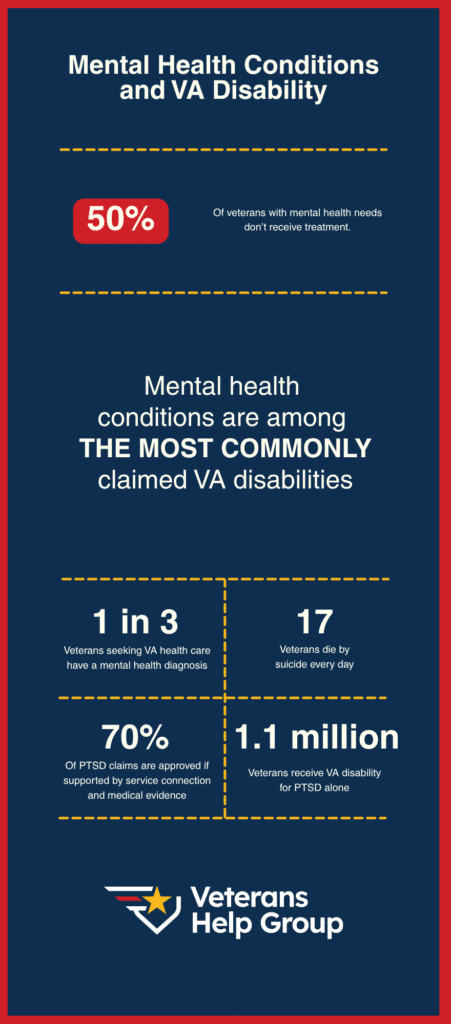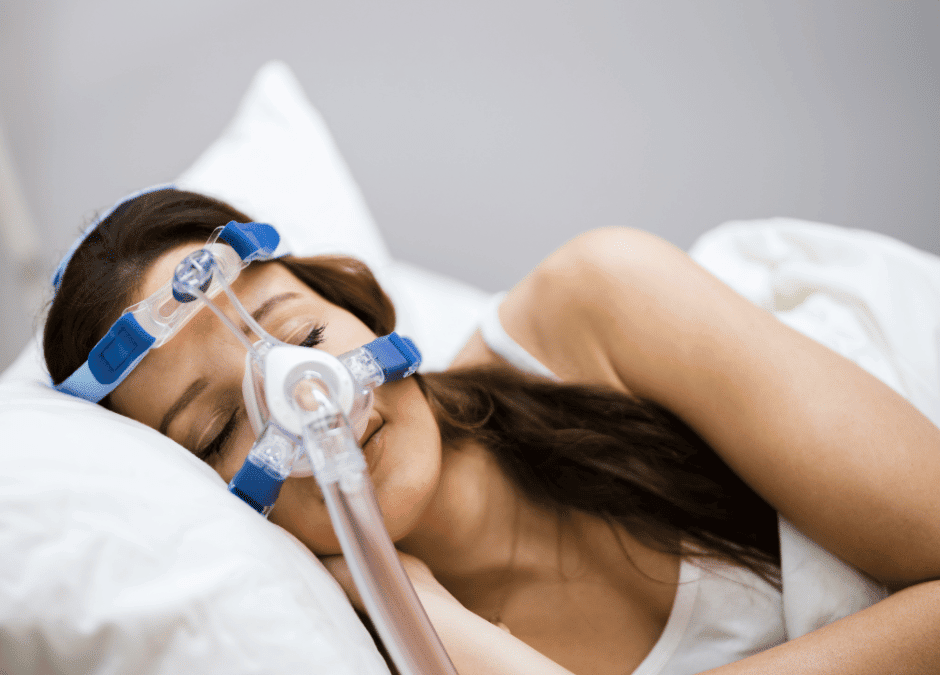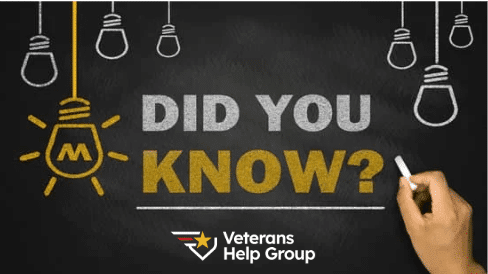Table of Contents
Depression can be debilitating. If you suffer from major depressive disorder and your condition is service-connected, you may be entitled to VA disability benefits. However, benefits vary considerably depending on your disability rating. If you qualify for a 100% disability rating, you will be eligible for benefits not available at lower ratings–even at 90%. So, it’s important to understand what is required to receive a 100% VA disability rating for major depressive disorder and know how to collect and present the right evidence to the VA.
What is Major Depressive Disorder?
Major depressive disorder is often referred to simply as “depression” or “major depression.”
Symptoms of depression include:
- Feeling sad, hopeless, or empty
- Loss of enjoyment and/or interest in usual activities
- Lack of energy and/or motivation
- Changes in appetite (increase or decrease)
- Fatigue
- Cognitive difficulties, including memory problems and difficulty making decisions
- Suicidal thoughts
- Unexplained pain, such as back pain and headaches
- Changes in sleep patterns (sleeping too much or too little)
- Suicidal thoughts or suicide attempts
- Anxiety
People struggling with depression may not realize that it is a mental health issue. And those around depressed people often make the mistake of thinking they can be prodded into shaking it off and getting on with their lives. Untreated depression can be life-threatening, so it is important that neither the veteran suffering from depression nor those in the veteran’s support system downplay or dismiss symptoms.
To receive VA disability benefits for depression, the veteran must show that:
- They suffer from depression, and
- The condition is service-connected
The first is typically established with the veteran’s medical records, though in some cases the VA may want additional information or testing. In some cases, this step is difficult because the condition hasn’t been taken seriously enough. It is important that a veteran claiming disability benefits for depression is being treated for the condition and that medical records support the diagnosis and show the severity of the condition.
Establishing a service connection can be more difficult because depression isn’t always immediately obvious. If the condition started during your military service, the connection will be easier to establish than if the condition was diagnosed later. In that case, you will likely need to tie your depression to one or more stressors that occurred during your military service and then rely on other veterans who served with you, your family, and others who saw the change in you to establish a timeline.
Showing the nexus between your military service and major depressive disorder can be challenging. An experienced veterans disability benefits advocate knows what type of information is necessary to prove a service connection, and how to gather that evidence.
VA Disability Rating Matter
The benefits a disabled veteran receives depend in large part on their disability rating. For example, a veteran with a 10% VA Disability rating in 2025 will receive a monthly compensation of $175.51. They won’t be entitled to any additional benefits for dependents and will be entitled to VA medical care only for their service-connected condition. On the other hand, a veteran with a 100% disability rating will receive $3,831.30/month for the veteran alone in 2025, and that amount may be increased if they have eligible dependents. They’ll be entitled to full medical care, and certain dependents may also be eligible for healthcare coverage and educational benefits.
Obviously, the higher your VA disability rating, the better. That means it’s important to submit the strongest possible claim, increase request, or appeal.

100% Disability Rating for Major Depressive Disorder
Depression is assessed using the same schedule as many other mental health issues.
Here is the standard the VA uses to determine whether someone suffering from major depressive disorder qualifies for a 100% disability rating:
Total occupational and social impairment, due to such symptoms as gross impairment in thought processes or communication; persistent delusions or hallucinations; grossly inappropriate behavior; persistent danger of hurting self or others; intermittent inability to perform activities of daily living (including maintenance of minimal personal hygiene); disorientation to time or place; memory loss for names of close relatives, own occupation, or own name.
As you can see, this is a high standard. Most veterans with major depressive disorder won’t qualify for a 100% VA disability rating. More important, though, is that many veterans who might qualify for a 100% VA disability rating don’t provide sufficient support with their claims to support a finding of 100% disability.
Other Disability Ratings for Depression
Not every disability rating is available for major depressive disorder. The schedule provides for a rating of 0%, 10%, 30%, 50%, 70% or 100%. In other words, if you fall just slightly short of a 100% rating, that doesn’t mean you’ll be rated 90%–the next available rating is 70%.
To establish a 70% disability rating, the veteran must demonstrate:
Occupational and social impairment, with deficiencies in most areas, such as work, school, family relations, judgment, thinking, or mood, due to such symptoms as: suicidal ideation; obsessional rituals which interfere with routine activities; speech intermittently illogical, obscure, or irrelevant; near-continuous panic or depression affecting the ability to function independently, appropriately and effectively; impaired impulse control (such as unprovoked irritability with periods of violence); spatial disorientation; neglect of personal appearance and hygiene; difficulty in adapting to stressful circumstances (including work or a worklike setting); inability to establish and maintain effective relationships.
At this level, the veteran will receive $1,759.19/month in 2025 plus any additional benefits for survivors. They’ll still receive full medical benefits, but dependents will not be entitled to medical or educational benefits.
Below the 50% level, the veteran receives reduced monthly benefits and medical care only for the service-connected condition. At the 0% level, there are no monthly benefits, but the veteran is entitled to healthcare services in connection with the service-connected condition.
An Experienced VA Disability Benefits Advocate Can Help You Get the Rating You Deserve
Getting the appropriate rating depends in part on making sure you submit the right type of evidence to establish every element of your claim and all of the symptoms and limitations that support the highest possible disability rating. At Veterans Help Group, we have extensive experience helping disabled veterans assemble the strongest possible claims and appeals. To learn more about how we can help you, call 855-855-8992 right now, or contact us here now!






